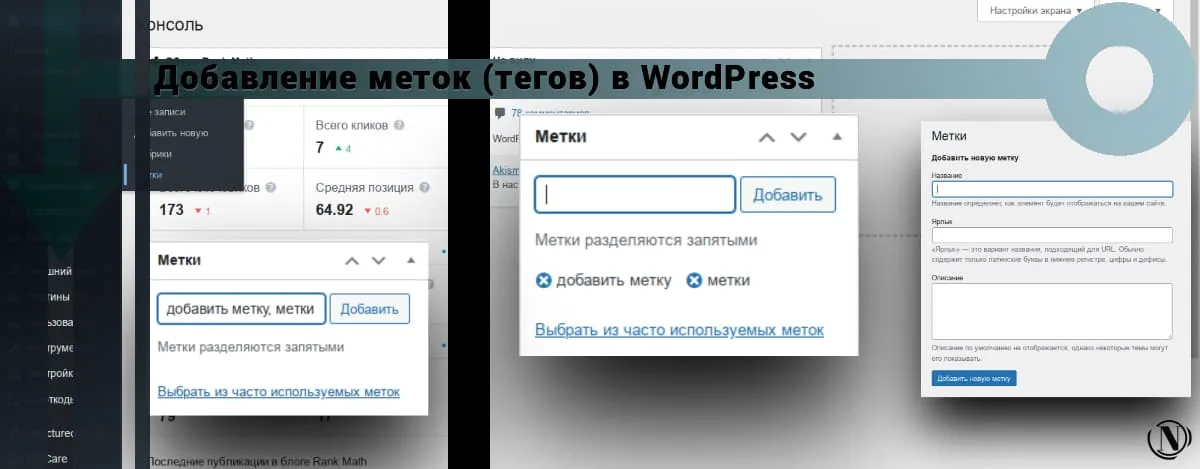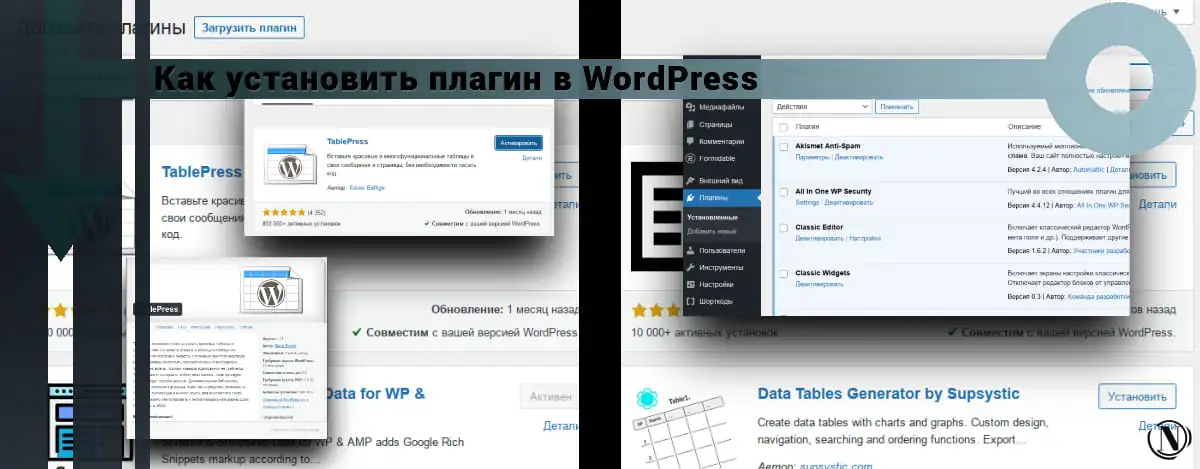Text Structure: Principles, Elements, and Variations
 The end product of a written work is a structured text.. Whether it is a scientific article, an advertisement, or a work of fiction, its structure is what provides comprehension, appeal, and usefulness to readers. In this article, we will look at the principles, elements and options for the structure of the text. As well as the types of structure that are used depending on the type of text and the goals of the author. Learn how to properly structure text to make it readable and understandable. And also get examples and recommendations that will help you create texts that will convey the message to the audience.
The end product of a written work is a structured text.. Whether it is a scientific article, an advertisement, or a work of fiction, its structure is what provides comprehension, appeal, and usefulness to readers. In this article, we will look at the principles, elements and options for the structure of the text. As well as the types of structure that are used depending on the type of text and the goals of the author. Learn how to properly structure text to make it readable and understandable. And also get examples and recommendations that will help you create texts that will convey the message to the audience.
The content of the article:
- Basic concepts of text structure
- Principles of text structure
- Text Structure Elements
- Additional text structure elements
- Text structure options
- Features of each type of text structure
- Text Structure Levels
- Examples of text structure
- Conclusion
- FAQ
Basic concepts of text structure
 Text structure is the organization of information in a text that allows the reader to better understand the content and the relationship between elements. This may include levels of organization, including paragraphs, sections, chapters, as well as logical relationships between them. The presence of a clear and understandable structure of the text helps the reader to easily find the necessary information and quickly navigate the content.
Text structure is the organization of information in a text that allows the reader to better understand the content and the relationship between elements. This may include levels of organization, including paragraphs, sections, chapters, as well as logical relationships between them. The presence of a clear and understandable structure of the text helps the reader to easily find the necessary information and quickly navigate the content.
Text Structure Elements include components that help organize information in a text. These elements may vary depending on the type of text, but include headings, subheadings, paragraphs, lists, and tables. Each element performs its function and helps the reader to better understand the content and relationships between the elements of the text.
The basic concepts of text structure include the conceptsrelated to the organization of information in the text. These concepts include such terms as: the beginning and end of the text, topic, main idea, purpose, style, etc. Understanding these basic concepts helps the writer create clear and effective text and makes it easier for the reader to navigate the content.
Organization of information in the text is important to help the reader quickly and easily obtain the information they need. The clear and understandable structure of the text makes it accessible and useful to read. This helps the reader better understand the content and stay interested in the topic. Knowing the elements of text structure and concepts helps the writer create clear text that is easy to read and understand.
Principles of text structure
- The purpose and objectives of the text - defining the purpose and objectives of the text helps to understand. What information should be included in the text, what information can and should be excluded, and how to organize this information in accordance with the objectives of the text. Focusing on goals and objectives allows you to create a text structure based on their satisfaction.
- Sequence of information - a well-organized text should have a logical sequence of information so that the reader can easily understand what it is about. An example of a text structure based on a sequence of information is an instruction for using a new product. Such a text should have a clear sequence of steps that must be completed to achieve the final goal.
- Logical connections between parts of the text - organized text should have clear connections between parts so that the reader can easily follow the logic of the text. Examples of text structure based on logical links may include the use of signal words and phrases that help the reader understand how parts of the text are related.
- Using headings and subheadings Organized text should contain headings and subheadings that help the reader quickly navigate through the content. Headings and subheadings are also elements of text structure that help highlight main ideas, improve readability, and speed up information retrieval.
Text Structure Elements
- Text structure elements play a role in content optimization for search engines. One of the key elements is the structure of the main text.
- Organized text should contain headings and subheadings, which help the reader to easily find the information they need and better understand what is being said. It also allows search engines to determine which queries the text should rank for.
- An important element of any text is the introduction. The introduction should contain keywords and phrases related to the topic of the text, which will allow search engines to better understand what it is about. The main text should be divided into understandable paragraphs, with a logical sequence of information and clear lexical links between parts of the text.
- A paragraph is a basic element of the text structure, which is a logically completed part of the text containing one idea or thought. Paragraphs are separated by a blank line and begin with an indent. Structured text should have paragraphs that highlight ideas and allow the reader to easily scan the text.
- The conclusion is another important element of the structure of the text. It should sum up and summarize the conclusions of the text. Annotation is a brief description of the text, which should also contain keywords and phrases related to the subject of the text.
Additional text structure elements
- An image is a text structure element that is used to illustrate text and additional information. Images may be photographs, illustrations, charts, graphs, or other graphic elements. Well-chosen illustrations and graphics can enhance the understanding of the text and make it appealing to readers.
- A list is a text structure element used to organize information into a list of items. Lists can be numbered or bulleted, and they can be used to list items, ideas, instructions, or any other items that need to be organized into a list. Well-designed lists help readers get the information they need quickly and easily.
- A text link is a text structure element that is used to create links between parts of text and other resources on the Internet. Text links can be used to link to other articles, resources, web pages, and other items that may be useful to the reader. Well-designed text links should be informative and accurate.
- The list of references is an important part of the structure of the text, especially for scientific and professional texts. It should contain full information about the literature used, which allows the reader to easily check the sources of information. A structured bibliography can also increase the authority of a text in the eyes of search engines.
Text structure options
Text structure is a key factor for successful SEO optimization. It affects the understanding and evaluation of the quality of content by search engines and users. There are many options for the structure of the text, each of which has its own characteristics and features.
- A chronological structure describes events in the order in which they occurred. This can be useful for storytelling, describing the history of a company, describing processes, etc. This type of structure allows you to provide a clear idea of the time frame and sequence of events.
- Topic structure organizes information around a main topic or idea. It can be used to write articles, blogs, reviews, product and service descriptions. In this case, the information will be structured around the main idea, making it easy to understand.
- The problem-oriented structure involves the consideration of issues and problems, their analysis and description of possible solutions. This type of structure is often used for writing articles that require analysis, evaluation, and critical thinking. This can be useful for writing scientific articles, analytical reports, etc.
- The compositional structure determines the way in which the text is organized as a whole. This may include choosing headings, subheadings, giving structure to paragraphs, and so on. It can be used to write articles that don't have a specific topic, but should be structured and easy to understand.
- There are other types of text structure, such as sequential, simple, parallel, etc. They have their own characteristics, characteristics and applications. Literary texts use a lexical structure that determines the choice of words, expressions and phrases. Poetry uses the lexical structure of the poem, which determines the choice of words, rhyme and metric.
In general, the choice of text structure should be determined by the purpose and objectives to be achieved. Each type of structure has its own characteristics and can be applied depending on the content and purpose of the text.
Features of each type of text structure
Each type of text structure has its own characteristics that must be considered when writing a text.
- For example, a chronological structure requires information to be organized by time frame. This makes it more logical and understandable for the reader.
- Thematic structure organizes information by topic and helps to focus on the main idea of the text.
- A problem-oriented framework focuses on identifying problems and solving them. This makes it more relevant and interesting to the reader.
- The compositional structure is built around different elements such as scenes, chapters and characters, which helps to create a more colorful and emotional text.
Choosing the right structure for a particular text depends on its purpose, topic, and audience.
- For example, for scientific articles, a problem-oriented structure will be most appropriate, which will help identify and solve the problem.
- For works of fiction, on the other hand, compositional structure can create an interesting story and add emotional depth.
The choice of text structure affects its readability and SEO optimization. For example, proper text structure with logical sections and headings can improve its readability. Using keywords in headings and paragraphs that match the structure of the text can improve its ranking in search engines. In general, the choice of text structure is an important aspect of writing, which can affect its effectiveness and impact on the audience.
Text Structure Levels
 The text structure can be divided into three levels: micro level, meso level and macro level.
The text structure can be divided into three levels: micro level, meso level and macro level.
- The micro level is the level at which individual elements of text are considered, such as paragraphs, headings, subheadings, lists, etc. These elements play an important role in creating a clear and logical structure for text and can be used to improve readability and navigation.
- The meso level is the level at which the relationship between text elements is considered. At this level, semantic and logical connections between individual elements are taken into account, such as links between paragraphs, headings, subheadings, etc. A structured meso level helps to make the text logical and understandable for the reader.
- The macro level is the level at which the organization of the entire text is considered. At this level, the structure of the text, its ideas and arguments, the logical connections between sections, as well as the tone and style of the text are taken into account. An organized macro level helps to make the text logical and compelling to the reader.
Choosing the right level of text structure depends on the goals and objectives that you set for the text. Readability, consistency, and SEO are all factors to consider when choosing the level of text structure.
Examples of text structure
- A good example of a chronologically structured article is a historical overview, which presents information in chronological order from early events to more recent events. This type of structure is useful for topics that have a long history of development, such as medicine or technology.
- A research paper with a problem-oriented structure begins with a problem definition. This is followed by problem analysis, hypothesis formulation, testing and analysis of the results. This type of structure is used for articles in scientific journals, as it allows you to convey research information to the reader.
- Fiction may have a compositional structure, where the story is divided into chapters that correspond to certain events or periods. This creates tension in the narrative and allows the reader to better understand the development of the plot. An example of such a work would be “War and Peace" Lev Tolstoy.
- Examples of text structure may also include business letters. Such letters have rigid formats and structure, with sections such as an introduction, body, and conclusion. This type of structure is useful for providing brevity and clarity.
- Another example of text structure is a blog. Blogs can be structured thematically, with each post focusing on a specific topic. This type of structure can help retain the reader and make it easier to find information on a blog site.
A simple structure example: see picture

Standard structure example: see picture

Complex structure example: see picture

A very complex example of a text structure for a selling site: see picture

Conclusion
In conclusion, it can be noted that the structure of the text is one of the key aspects in creating effective and readable content. Regardless of the topic and purpose of the text, choosing an appropriate structure will help improve its quality and enhance its comprehensibility for readers.
Basic principles and elements of text structure, such as: headings, subheadings, paragraphs, lists and images. Must be used correctly and correspond to the chosen type of structure. No less important is the level of text structure - micro-level, meso-level and macro-level, each of which plays a role in the organization of the text.
To make the best use of text structure, there are a few important tips to keep in mind. First, it is necessary to determine the purpose of the text and choose an appropriate structure in accordance with it. Secondly, one should not forget about the readability and understandability of the text. Use paragraphs, lists, and images to make information easier to understand. And, finally, it is important to follow the logical coherence and consistency of the text at each level of the structure.
In general, the correct use of text structure can improve its quality and influence positions in search results. Be attentive to the structure of texts and follow the basic principles for success in SEO optimization.
FAQ
What is text structure and why is it important for SEO?
Text structure is a way of organizing information in a text. It includes various elements such as headings, paragraphs, lists, and images. Organizing text in a structured form improves the readability of the text, helps site visitors find the information they need faster, and improves site SEO. Structured text is easier for search engines to understand, which increases the chances of a high ranking in search engines.
Q: How do I choose the right text structure for my content?
The choice of text structure depends on the purpose and topic of your content. If you are writing a scientific article, then it is better to choose a problem-oriented structure. If you are creating descriptive material, then a chronological structure might work better. Compositional structure is often used to create attractive and interesting texts in fiction. In general, the choice of structure depends on the topic, the target audience and the purpose of the content.
What text structure elements should I use for better SEO?
For better SEO optimization, you should use keywords in headings and paragraphs of the text. You should also use subheadings, a bulleted or numbered list, and images with alt tag attributes. These elements will help search engines understand your content better and improve its ranking in search engines.
How can I improve the structure of the text on my site?
A: To improve the structure of the text on the site, it is recommended to use visual elements. Such as: headings, subheadings, lists and images. You should also make sure that the content has a clear and logical organization. In which each element serves a purpose and is subordinate to the theme of the content. Don't forget to use keywords and phrases in the text. But do not stop using them excessively to avoid the possibility of falling under search engine filters.
In addition, it is important to take into account the levels of text structure, such as micro-level, meso-level and macro-level. To create quality content and increase its SEO optimization. Do not forget that each type of content can have its own structure. Therefore, you need to adapt your approach depending on the format of your content. Finally, to make sure you are using the correct text structure on the site. Conduct a content audit to identify weaknesses and fix them according to SEO practices.
Reading this article:
- How to write an abstract for an article: tips and examples
- Content Marketing Strategy: Tips and Tricks
Thanks for reading: SEO HELPER | NICOLA.TOP











